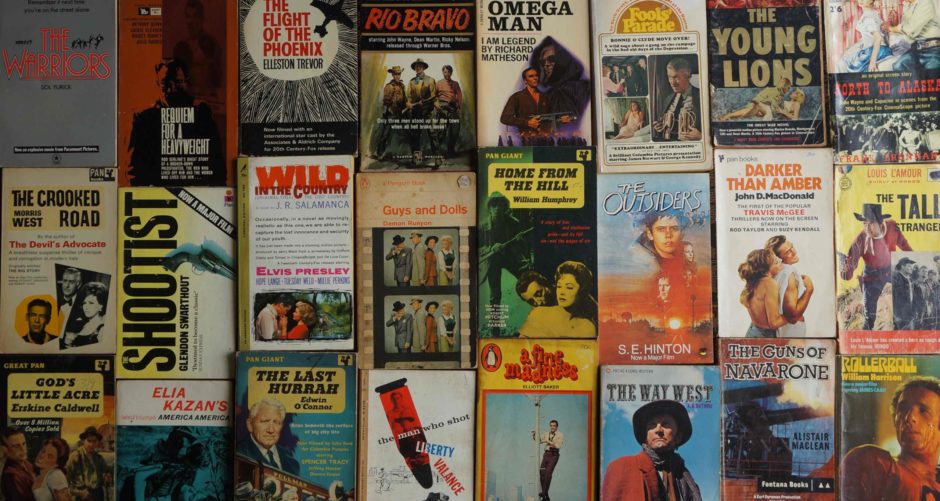FILM DIRECTOR: Adam McKay
SCREENWRITER: Charles Randolph, Adam McKay
FILM STARS: Ryan Gosling, Christian Bale, Steve Carell, Brad Pitt, Marisa Tomei, Rafe Spall, Melissa Leo.
COUNTRY: USA
THIS BOOK
AUTHOR: Michael Lewis
TYPE: Non Fiction
PUBLISHER: Penguin
THIS EDITION PUBLISHED: 2015
COUNTRY: Great Britain
COVER: Paperback
THE ORIGINAL BOOK
ORIGINAL AUTHOR: As Above
YEAR FIRST PUBLISHED: 2010
ORIGINAL BOOK TITLE: The Big Short : Inside the Doomsday Machine
NOTES
GENRE: Drama
WORDS:
I haven’t read the book.
I have seen the film.
I should read the book.
The film was excellent. A great example about how to make interesting the potentially boring behind the scenes nuts and bolts that lead up to a non-violent historical event. The historical event here being financial crisis of 2007–08 which rocked the USA and reverberated around the world.
The Big Short describes several of the main players (names changed), who believed (against the grain and against prevailing wisdom) the housing (loans and mortgages) bubble in the USA was going to burst and became involved in the creation of a credit default swap market that sought to bet against the collateralized debt obligation bubble and thus ended up profiting from the financial crisis of 2007–08.
A crisis it was. Described in Wikipedia as a:
“severe worldwide economic crisis that occurred in the early 21st century. It was the most serious financial crisis since the Great Depression (1929). Predatory lending targeting low-income homebuyers, excessive risk-taking by global financial institutions,[2] and the bursting of the United States housing bubble culminated in a “perfect storm”.
Mortgage-backed securities (MBS) tied to American real estate, as well as a vast web of derivatives linked to those MBS, collapsed in value. Financial institutions worldwide suffered severe damage, reaching a climax with the bankruptcy of Lehman Brothers on September 15, 2008, and a subsequent international banking crisis.
https://en.wikipedia.org/wiki/2007%E2%80%932008_financial_crisis
The book is accurately subtitled “Inside the Doomsday Machine”
I’m no financial genius and still use the old school jars method of running my finances – a jar for bills, a jar for loan repayments, a jar for living expenses, a jar for holidays etc (don’t come looking for jars … they are metaphorical for bank accounts) and I don’t move money around much or bet on outcomes but I could follow what was going on even with all the financial detail and jargon that need to be understood to know where the film is going. Purposefully, the film dumbed down the high (and low) finance for people like me with on-screen visuals and on-screen celebrity non-sequitur explanations to accompany the narrative which was great, and compelling, giving it a docudrama feel at times.
I expect that was part of its success, telling a true story, reasonably accurately (one of my big finance mates with 40 years under his belt who lived through the crisis, ta Greg, says the film was spot on). Who am I to argue?
Its skill, and there were three separate but concurrent stories, loosely connected by their actions that were followed in the years leading up to the 2007 housing market crash, is in keeping all the stories on track and having them build up and feed off each other to the cataclysmic event. And it’s quirky funny as you would expect from the director writer of Anchorman: The Legend of Ron Burgundy (2004), Wake Up, Ron Burgundy: The Lost Movie (2004), Talladega Nights: The Ballad of Ricky Bobby (2006), Step Brothers (2008), The Other Guys (2010), Anchorman 2: The Legend Continues (2013). With four big stars, Pitt, Bale, Carell and Gosling it was guaranteed good box office (and the book had been a best seller also – 28 weeks on The New York Times’ non-fiction bestseller list in 2010).
Modern films with their talky-ness (and appreciation that modern audiences are, perhaps more in tune) have captured the business and finance world more accurately that golden age cinema ever could and, perhaps, that’s why they didn’t deal with the micronomics but the people and the big picture … I also miss the emotion and moving pictures to tell a story (the “cinema”) of the old films (American Madness (1932), The Conquerors (1932), The Grapes of Wrath (1940), Executive Suite (1954), From the Terrace (1960) etc)
My only minor criticism with this film is that the central punter characters who gained wealth from the crisis are portrayed as white knight eccentrics who can see the system about to topple. This is the system they work in and had profited by and now stood to profit more (which they did) because they were particularly astute. They aren’t saints, they just saw an opportunity. The film needs us to identify with them, hence their occasional put downs of big business. Maybe they were like that (maybe it’s in the book), but ultimately I thought it a little unnecessary. They saw an opportunity and took it … vulture like maybe but the real vultures were the big banks and finance houses, the corporate heads and the system itself which clearly lacked regulation.
The books author, Michael Lewis, is a well published financial journalist (with a degree in art history as well as economics). He seems to have the knack to dumb down complex financial money shenanigans and their human motivations into a fiction-like narrative. He did the same with in his book on American baseball finances, Moneyball: The Art of Winning an Unfair Game (2003), which was also made into a film, Moneyball (2011). Another worthwhile film to watch even if you have no interest in baseball, just like this film about banking and finance.
LINKS
TRAILER



yep re Kirk … no one pushes Kirk around. His Bryna Production Company was involved with (partially funded) POG ..and…